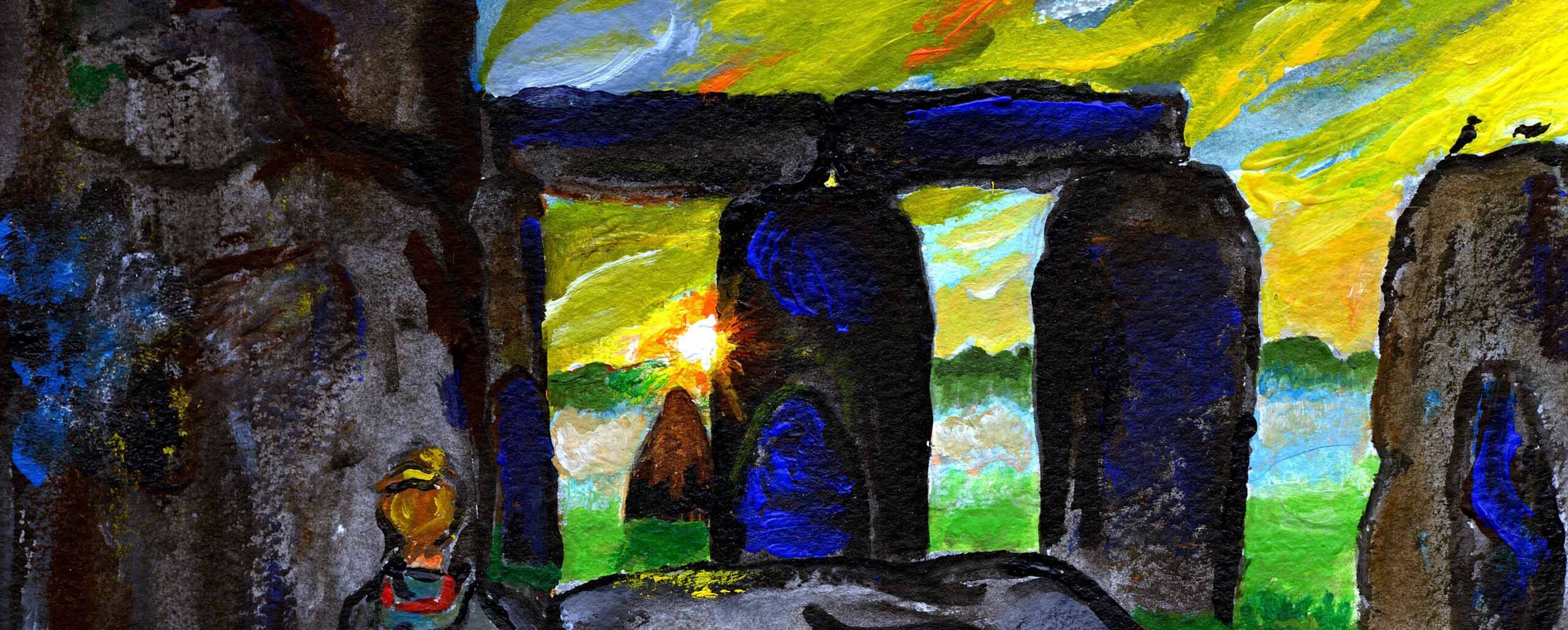This illustration from the new edition of To Know the Stars (my book for children) shows Sun and Earth, and the distance between them as a folded line.
The Sun, which was rising from the summit of Golden Cap, this morning came into view out of the hill’s southern face, the highest cliff along the whole south coast of England.
Having returned from seeing it, I did some more reading about the religions engaged in mutual slaughter in Iraq.
What does the Sun think of us?
Earth is a crumb infested by small organisms that fight each other.


I’ve also been feeling discouaraged by a lot of the news. But there are also good things happening, such as the huge climate demonstrations and the UN conference, the US and India putting satellites into orbit around Mars, and many Muslim scholars and clerics from around the world signing a joint statement explaining how the self-described “Islamic State” terrorist organization is violating the fundamental teachings of Islam, and why they should be condemned and opposed. One always has a choice, to do something to make the world a little better, or to succumb to despair. When anyone (including me) is overwhelmed by all the greed, hatred, and ignorance in the world, I hope there will be somebody else there to lend a sympathetic ear and an encouraging word.
By the way, I’m very happy to learn that the new edition of “To Know the Stars” has been published. The first edition has been very helpful to me, and to several children of my acquaintance. Now I know what to give the young ones for Christmas.
“They kill each other and do not understand gravity”
Alien report to HQ regarding Earth
The Earth, a crumb infested by organisms that fight each other???
The way I look at it, the Earth is an organism in and of itself. All of what we perceive as ‘organisms’, trees, mammals, insects, etc) I see as tissues, systems, organelles, and other subsets of what composes an organism.
Viewing a distant hilly horizon the trees seem to form a furry hairy buffer between the skin of the earth and it’s immediate surroundings. I guess here’s where the Gaia principle also kicks in a little, along with Native American concepts of the oneness of the earth. The waves and tides against the shores are similar to rhythmic breathing. Too many of us humans have lost touch with this sense and have become a virus intent mostly in just reproducing and forgetting how to balance our acts with those of nature.
How much of this abuse is the earth going to tolerate before it decides its had enough of us and begins it’s Grand Purification, like a dog shaking out it’s fur to rid itself of fleas.
I could probably go on and on, but I don’t know how much space is allotted to me and my crazy thoughts and philosophies, so I’ll leave it at this for now.
Yes, there are many ways of looking at the reality surrounding us, depending on mood and on the scales of time and space. On one scale-level, for example, life on Earth is mainly a matter of bacteria. On another, in some billions of years the universe will have gone cold and even protons will have disintegrated, so nothing ultimately matters. On another, I am as exuberant as you, for example when riding through woods in a warm night and exulting that we live in a world of such variety and not a world made of gray triangles. None of these are scientific frameworks, and I’m not sure that the Gaia hypothesis is.